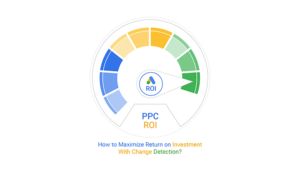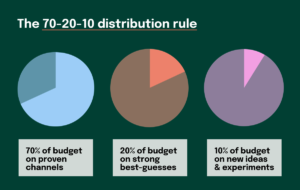Businesses are achieving measurable results with performance marketing in a digital world. By allocating resources smartly, companies can grow faster and outpace their competitors. However, many struggle to find a balance between short term wins and long term strategy. Get actionable insights into optimizing your performance marketing budget, so every dollar works toward your goals.
The Importance Of Performance Marketing
In today’s digital marketing, what does that mean?

How to Allocate Your Performance Marketing Budget for Success
A performance marketing campaign focuses on measurable results like clicks, leads, and sales. Unlike traditional advertising, it’s directly linked to results, so it’s indispensable for data driven marketing today.
Here are some success stories
Take a look at how companies likeAirbnb used performance marketing to scale. Through PPC and social ads, they tracked user acquisition costs, making ad spending more efficient.
Trends in marketing budgets

How to Allocate Your Performance Marketing Budget for Success
Recent reports show that businesses allocate over 50% of their marketing budgets to digital. Performance marketing is becoming more trusted to drive ROI, which is great news.
Budget Allocation Challenges For Performance Marketing
Getting the best of both worlds
It’s hard for businesses to focus on long term strategies like brand building or organic growth if they’re under pressure to deliver immediate results.
Fragmented digital landscapes
It’s hard to choose the right mix with platforms like Google, Meta, and TikTok always innovating. The best way to maximize returns on each is with a unique strategy.

How to Allocate Your Performance Marketing Budget for Success
It’s important to understand the strengths and weaknesses of each platform, and tailor campaigns to target the right audience. It’s also important to stay up to date with the latest trends and technologies to ensure maximum effectiveness.
Getting The Most Out Of Your Performance Marketing Budget
What it is and how it works
It’s all about:
Google Ads: High intent leads.
Brand recall with visual storytelling.
Ads on social media: Using Instagram to reach out to the right people.
In affiliate marketing, you partner with influencers or affiliates and share the profits.
You can retarget potential customers to drive conversions by reengaging them.
Metrics for budgeting

How to Allocate Your Performance Marketing Budget for Success
You can make better decisions when you know ROI, CAC (Customer Acquisition Cost), and LTV (Lifetime Value). ROI (Return on Ad Spend) measures campaign effectiveness. CAC measures the cost of acquiring a customer. LTV measures the value of a customer over their entire lifetime. Knowing these three metrics can help guide decision making and inform strategy.
Trends affecting budget allocations
Automation tools like programmatic advertising are reshaping how budgets are allocated, ensuring optimal results in real time.

How to Allocate Your Performance Marketing Budget for Success
AI driven insights are also enabling marketers to make decisions quickly and accurately. Additionally, the rise of social media and the need for personalized content are driving the need for increased budget allocations in these areas.
Identifying Business Goals And Aligning Them With Marketing Goals
Goals for the short and long term

How to Allocate Your Performance Marketing Budget for Success
Campaigns aimed at boosting sales might be short term, while long term strategies aim to build brand equity.Â
KPIs that are clear
Having measurable benchmarks aligned with business goals, like cost per click (CPC) or conversion rates, is key. KPIs should be regularly monitored and updated to ensure they remain relevant. Regular reporting should also take place to identify areas of improvement. Finally, KPIs should be shared with all stakeholders to ensure everyone is on the same page.
Benchmarking and case studies
Approximately 15-20% of a retailer’s budget goes to paid search, while B2B companies prioritize LinkedIn due to its B2B focus.
Distribution Of Budgets Across Channels
Analyzing channel effectiveness
It’s great for audiences with high intent, but it’s competitive.

How to Allocate Your Performance Marketing Budget for Success
With social, you reach a lot of people, but your engagement rate varies.
Scaling is great with programmatic, but there’s a learning curve.
Using email to nurture existing leads has a high ROI.
Budgeting Framework
There’s a lot of strength in the 70-20-10 Rule:

How to Allocate Your Performance Marketing Budget for Success
It’s 70% proven channels.
20% of your time will be spent scaling new businesses.
10% goes to experiments.
Making sure you’re balancing paid and organic efforts
As organic strategies reduce CAC over time, they make paid campaigns more efficient. This can help businesses maximize their ROI and scale their operations. Additionally, organic strategies can help businesses build a loyal customer base.
Allocation Tactics That Work
Making decisions based on data
Using tools likeGoogle Analytics, you can track campaign performance and allocate budget accordingly.
The seasonality of the market

How to Allocate Your Performance Marketing Budget for Success
A retail business might increase budgets around Black Friday, while a SaaS company might focus on the end of the year.
Budgeting for retargeting

How to Allocate Your Performance Marketing Budget for Success
It’s proven retargeted ads increase conversion rates by 70%, making them a high impact investment.
Embracing AI and automation
AdRoll and HubSpot automate campaign adjustments, ensuring maximum effectiveness. This allows marketers to focus on creative and strategic tasks, rather than repetitive tasks. AI can also be used to identify patterns in customer behavior, allowing marketers to tailor campaigns and create personalized experiences.
Managing Performance Marketing Budgets

How to Allocate Your Performance Marketing Budget for Success
Using multiple channels instead of just one
It minimizes risk if algorithms or trends change unexpectedly if you diversify across platforms.
Underperforming campaigns
Identifying and fixing underperforming ads quickly with regular performance reviews and A/B testing.
Flexibility in your budget
Contingency funds allow you to realign the budget when market fluctuations happen or new opportunities arise.
Budgeting Tools and Resources
Getting started with budgeting
Transparency and accuracy are ensured with budget planning tools likeImprovado andAllocadia.
Modeling attribution
With multi touch attribution, you can see how different channels contribute to conversions. This will help you optimize your marketing budget and maximize your ROI. It will also help you identify where to focus your efforts to get the best results.
Machine learning and predictive analytics
A predictive tool predicts ROI and gives you actionable insights. It can also help you identify potential risks and opportunities. Predictive analytics can be used to optimize resource allocation and make better dec
Getting The Most Out Of Your Money

How to Allocate Your Performance Marketing Budget for Success
Keeping track of your campaigns
Dashboards let marketers keep track of key performance indicators like engagement rates and average order values.
Budget optimization iteratively
Campaign elements like creatives and CTAs can be refined continuously with A/B testing.
Optimisation case studies
Using agile marketing, brands like Spotify reallocate funds based on real time performance metrics.
Budgeting For Performance Marketing: Future Trends
Ads that put privacy first

How to Allocate Your Performance Marketing Budget for Success
Marketers must prioritize contextual advertising and first party data after cookie deprecation.
Data from first parties will be more important
Targeting and personalization will be made easier with email lists and CRM data.
Marketing with sustainability and ethics

How to Allocate Your Performance Marketing Budget for Success
ESG focused marketing could get more budget as more consumers choose eco conscious brands.
Conclusion
Effective performance marketing budgets require agile execution and strategic foresight. Marketing can drive sustainable growth by tracking metrics, diversifying investments, and using AI. It’s important for businesses to learn and adapt as the landscape changes. Spending with precision makes sure every dollar counts.Â
Automating processes and maximizing efficiency are also important for marketers. It’s essential to have the right infrastructure in place. The last thing marketers need to do is stay vigilant and adjust their strategies when needed. Staying competitive means using technology and staying ahead of the curve. Staying ahead of the competition means using data driven approaches.


